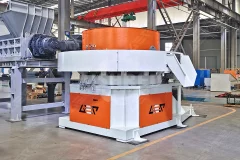
RDF Fuel Briquetting Machine is Committed to the Reduction and Resourcefulness of Municipal Waste
2024-10-11Municipal domestic waste contains a large number of high calorific value components, and this calorific value will not be effectively utilized if the waste is directly incinerated or filled. Through the existing thermal power plant, thermal power plant, cement plant coupled with power generation and co-disposal, combined with RDF fuel briquette production technology, no landfill, no need to invest in the construction of waste incineration power plant, can be municipal garbage, industrial solid waste, “harmless, minimization, resource, energy” comprehensive utilization of the treatment and application.MSWAs municipal waste is incinerated directly as a solid fuel without treatment, the following major problems often exist:The organic matter in the garbage is extremely perishable, transportation and storage are more difficult;.The garbage has a composition and calorific value fluctuations, moisture and ash content and other characteristics, easy to cause combustion instability.The waste often contains plastics
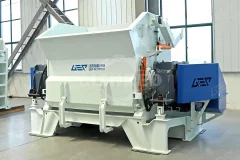
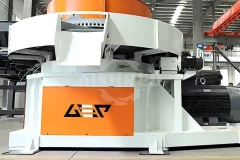
Recently, a European client inquired about RDF pelleting equipment for their waste management company in Southeast Asia. The required output for pellets is 2-3 tons per hour, and the raw material is a mixture of sorted MSW combustibles, including plastics, cardboard, textiles, rubber, etc.After preliminary communication with the customer, we have gained an understanding of their general disposal process and specific requirements for the final product, confirmed our scope of supply. Then the customer made new requirements and wanted to add a mixer to mix wood dust and the shredded MSW combustibles together, to improve the quality of the molded products.After communicating with our technical team, we suggest to the customer that wood chips can be mixed with other raw materials and shredded together. Additionally, we will add a uniform feeder in front of the RDF pellet mill to facilitate mixing.Through half a day of communication and under the strong technical support of our technical team, we have successfully
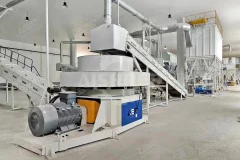
RDF alternative fuel is a new type of fuel with many advantages, compared with traditional fuel, it has obvious advantages in environmental protection, resource utilization and economic benefits. One of the main advantages of RDF alternative fuel is that it is more environmentally friendly. It is usually made from waste or renewable resources, such as garbage, biomass, etc. It reduces dependence on fossil fuels, lowers greenhouse gas emissions and other pollutants, and has positive significance for improving air quality. RDF has a higher calorific value, which provides more energy and improves the efficiency of energy utilization. This not only reduces fuel consumption, but also lowers energy costs.The preparation process of RDF is relatively simple. Generally speaking, it needs to go through the steps of waste collection, classification, crushing, drying, etc., and then it is processed into pellets or lumps of fuel with certain specifications. This preparation process not only can effectively utilize waste
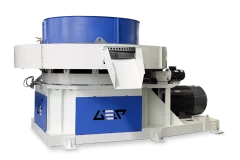
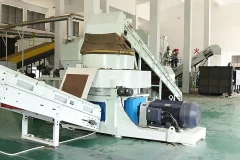
RDF Pellet Machine
2023-09-03RDF pellet machines are designed for the drying and forming of combustible solid waste. Their primary function is to transform waste into standardized block-shaped fuel, increasing the calorific value per unit volume and facilitating storage and transportation. In the field of waste management, these pellet machines play a crucial role by converting otherwise useless waste into economically valuable alternative fuel.On the production site, RDF pellet machines face a significant challenge related to humidity. While they offer a drying function, these machines are not specifically designed for drying. Excessive moisture content can result in high energy consumption and issues such as reduced output and poor forming effects.GEP ECOTECH has rich experience in waste-to-fuel conversion, offering a series of equipment from shredders, magnetic separators, air separators to forming machines. Our equipment has extensive material adaptability, capable of transforming various combustible wastes such as municipal solid
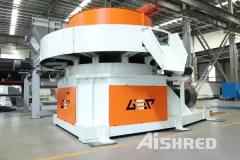
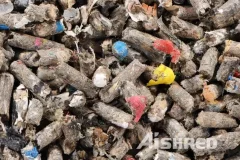
RDF Pelleting Machine for Sale
2023-02-28RDF refers to refuse-derived fuel, which is fuel obtained from waste. According to the standards of the American Inspection and Materials Association, RDF can be divided into seven categories: RDF1 to RDF7. Generally, RDF refers to shaped RDF pellets, which are derived from municipal solid waste and obtained after shredding, sorting and pelleting. The RDF technology brings life to the energyization of waste and becomes a new growth point in the field of waste utilization. It is widely used in coal-fired power plants, thermal power plants, waste incineration power plants, thermal power plants, cement plants and other enterprises, effectively accelerating the transformation and upgrading of power, gradually realizing green and low-carbon power production, and contributing to the global energy transformation. In order to produce high-quality RDF, besides shredding and screening equipment, RDF pelleting machine is also very important. High-quality RDF equipment can reduce your energy consumption and reduce the
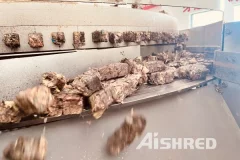
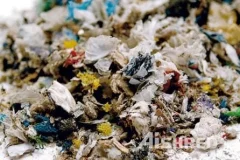
How Much does a RDF Plant Cost?
2022-05-16Alternative fuel RDF(refuse derived fuel) or solid secondary fuel is a fuel obtained from waste. RDF contains high-calorie waste components such as plastic, paper, cardboard, textiles, rubber, leather, wood, etc.RDF can be used as main or supplementary fuel in furnaces of cement plants, thermal power plants, metallurgical furnaces. The calculations performed showed the expediency of replacing gas or coal with RDF in the production of cement.The production of cement requires significant energy costs due to the need to maintain the temperature in cement kilns above 2000°C. For each ton of cement produced, typically 60-130 kg of fuel oil, or its equivalent (natural gas, coal), and about 105 kWh of electricity are required. On average, energy, fuel and electricity costs account for up to 40 percent of cement manufacturing costs. Therefore, it is advisable to use alternative fuels obtained from waste in production processes in order to reduce the use of traditional fuels and raw materials by replacing them with


